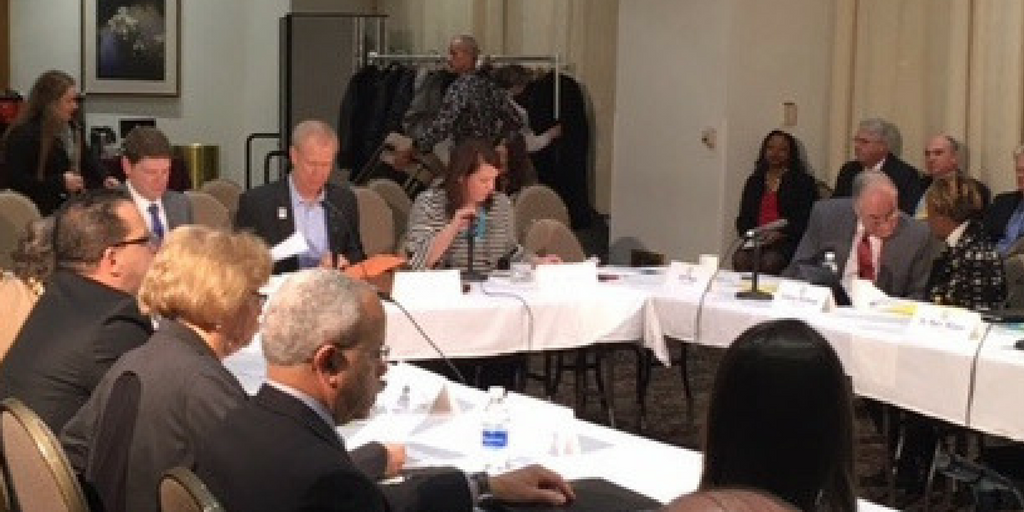CHICAGO — During a meeting today at Rush University Medical Center, the Governor’s Cabinet on Children and Youth selected new priority initiatives for the upcoming year. Over the past few months, agency representatives have collaborated to craft thoughtful proposals on issues affecting youth in Illinois.
The Cabinet decided to move forward with four projects:
• Childcare Subsidies and Self-Sufficiency: link Childcare Assistance Program data to wage and employment information to better understand CCAP effects on family self-sufficiency.
• Dually Involved Multi-System Collaboration: create a cohesive strategy for improving outcomes for children simultaneously involved with the child welfare and the criminal justice systems.
• Statewide Community-Based Mentoring Network: enhance agency collaboration to ensure that the most-at-risk youth in Illinois can access strong mentors.
• College & Career Readiness through Transitional Math and Alternative High School Equivalency (HSE) Credentials: collaboratively develop transitional programs to facilitate post-secondary degrees and credentials.
“Each of these projects provides an opportunity to improve cradle-to-career pathways for Illinois children,” said Gov. Rauner. “It is essential to the future viability of our state that our children arrive at adulthood healthy, safe, well-educated and self-sufficient. These initiatives will encourage strategic partnership between state agencies to address the obstacles facing youth in Illinois.”
“Strengthening families in Illinois through data-informed policy lies at the heart of IDHS initiatives,” said Department of Human Services Secretary James Dimas. “This year we will collaborate with the Illinois Department of Employment Services to understand the effects of the Childcare Assistance Program (CCAP) on transitioning families to self-sufficiency.”
“The long-term returns are tremendous in lives and dollars saved,” said Department of Child and Family Services Director Beverly Walker. “Youth disengagement occurs when we focus on the individual as the problem, rather than on the structures, processes or settings in which young people interact and spend time. We have to begin by listening to their voices and asking them to help us construct the system that they need, rather than the system that we have.”
“I’m really excited that the Children’s Cabinet selected the statewide mentoring program,” said Heidi Mueller, director of the Illinois Department of Juvenile Justice. “DJJ is eager to partner with our sister agencies to begin work on this important issue. We know that the presence of just one caring, reliable adult in a child’s life has a huge impact on their success in school, their ability to become self-sufficient adults, and their risk of becoming victims or perpetrators of violence. Mentoring is an evidence based strategy that even resource-starved communities can access.”
Regarding the selection of the college and career readiness project, Illinois Community College Board Director Karen Hunter Anderson said, “Most jobs today require postsecondary education. Illinois cannot afford to let students lag behind. We need to prepare tomorrow’s workforce today.”
The Cabinet also discussed progress made on its initial projects: workforce readiness through apprenticeship and pathways, early childhood workforce development, and decreasing the childhood lead burden. Work will continue on these projects as they move into their next phases.
Gov. Rauner established the Cabinet on Children and Youth on February 18th, 2016 to create a more collaborative statewide system focused on improving outcomes for children and youth. The Cabinet adopted 42 Key Performance Indicators in September 2017, with the vision of ensuring that all children and youth in Illinois are healthy, safe, well-educated and self-sufficient by age 25.
More information about the Governor’s Cabinet on Children and Youth can be found at https://www2.illinois.gov/sites/children/Pages/default.aspx.
Video of the meeting will be posted here.



Speak Your Mind
You must be logged in to post a comment.